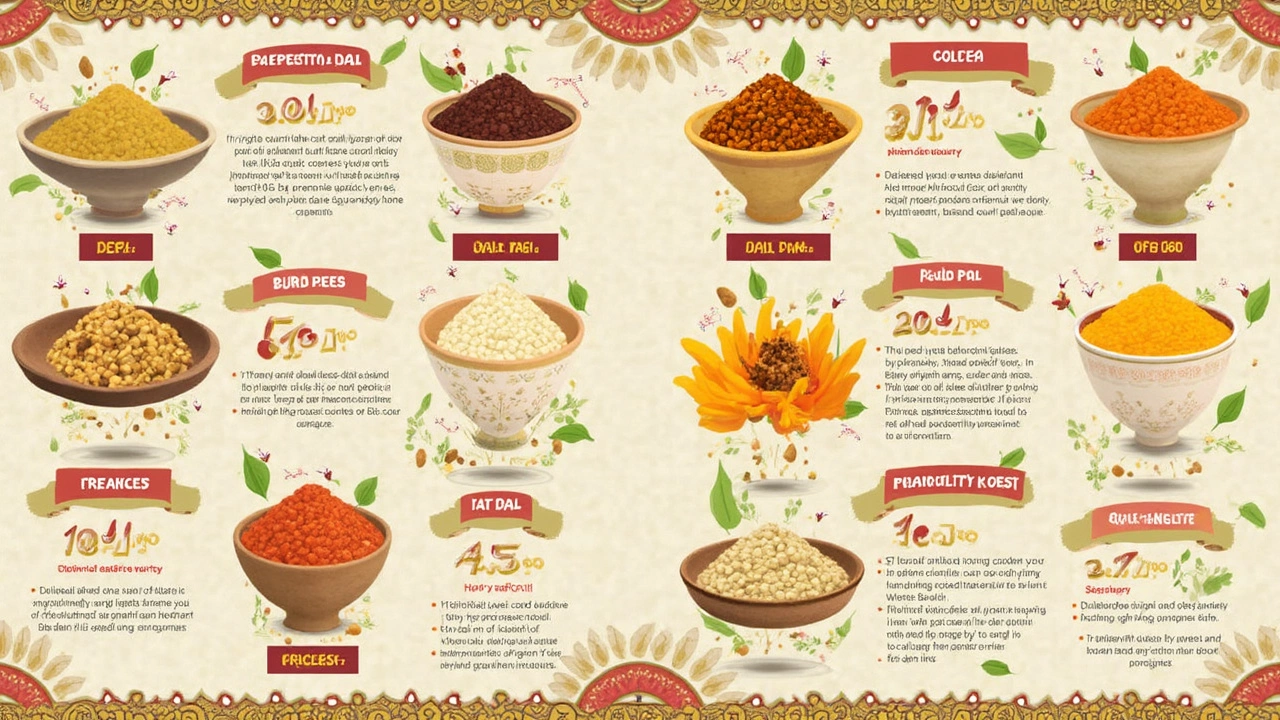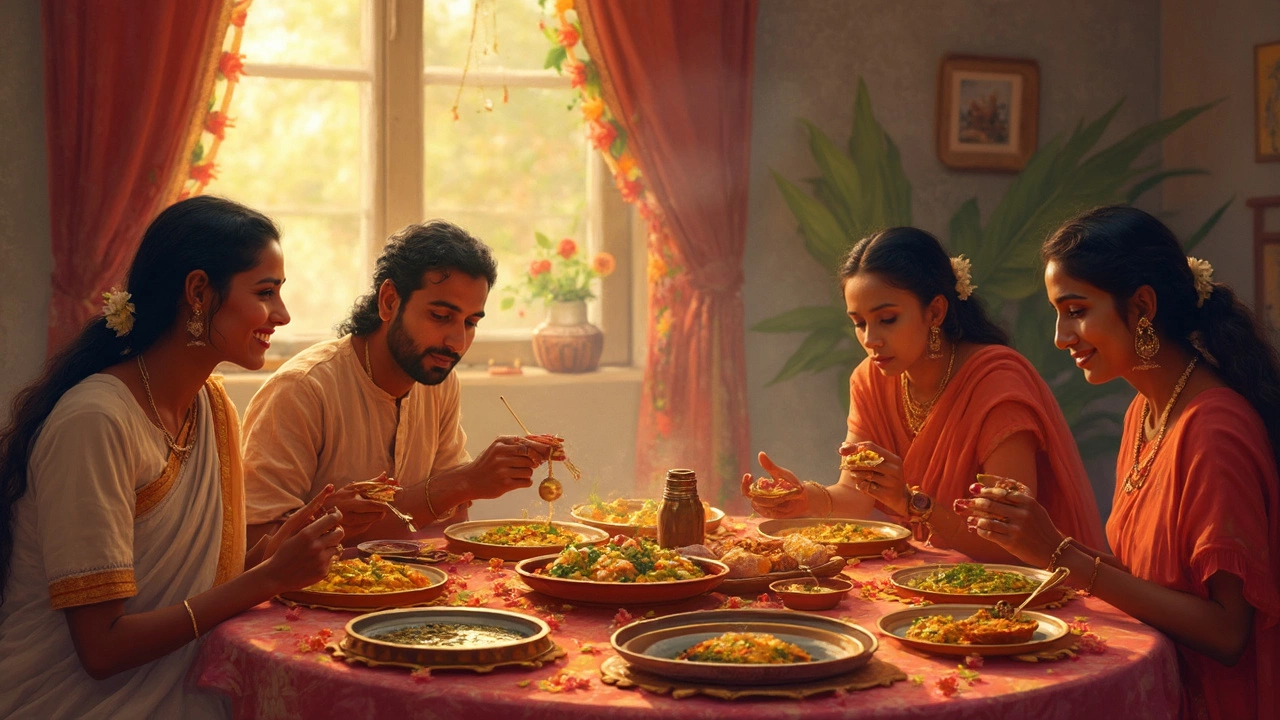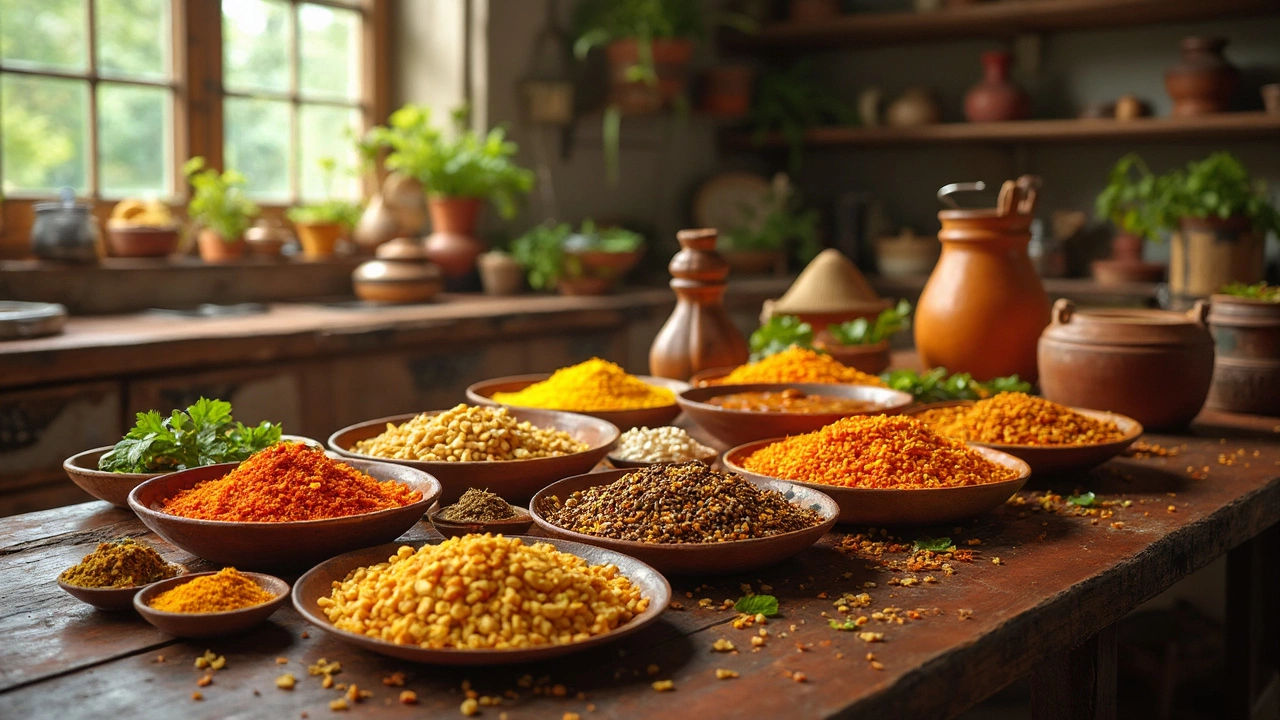23 Mar 2025
- 0 Comments
Ever wondered which dal is the protein powerhouse? You're in the right place. Let's talk dal, specifically which one's packing the most protein punch. If you're looking for a plant-based protein boost, moong dal, also known as mung beans, is at the top of the list. Not only is it rich in protein, but it's pretty versatile and easy to cook with.
Why focus on dal for protein? It's a staple in many diets, especially if you're looking to reduce meat consumption while keeping those muscle-building nutrients intact. Plus, it's affordable and quick to prepare, making it perfect for busy days. But wait, there's more than just moong dal. We'll dive into some other contenders and how to make the most of them in the kitchen. Ready to find your new go-to dal?
- Understanding Dal Varieties
- Protein Content in Different Dals
- Cooking Strategies for Maximum Protein
- Creative Ways to Include Dal in Your Diet
- Nutritional Benefits Beyond Protein
Understanding Dal Varieties
Dal might just look like tiny colorful beans or lentils at first glance, but there’s more to it than meets the eye. There are several types of dal you can choose from, each with its unique flavor, texture, and nutritional punch. Let's walk through the most popular varieties and see what they bring to the table.
Chana Dal
Let's start with chana dal. These are split chickpeas and are super versatile. They're part of many Indian dishes like curries and dal makhani. With its nutty flavor and slight sweetness, it’s not just tasty but also packs decent protein levels.
Moong Dal
Moong dal, often praised for its high-protein content, is lighter and a bit sweeter. It's easily digestible, making it perfect for soups and stews. Plus, it's quick to cook, so no long waiting by the stove.
Toor Dal
Then there's toor dal or pigeon peas. It’s slightly nutty and down-to-earth and commonly used in the classic Indian dish, sambar. This variety is widely used across many Asian cuisines.
Masoor Dal
Masoor dal, or red lentil, is another common choice. It's mild in flavor and turns mushy when cooked, perfect for thickening soups or making hearty stews. An excellent choice if you're looking for something fast and flavorful.
| Dal Type | Protein Content (per 100g) | Cooking Time |
|---|---|---|
| Chana Dal | 19g | 25-30 minutes |
| Moong Dal | 24g | 15-20 minutes |
| Toor Dal | 22g | 40-45 minutes |
| Masoor Dal | 25g | 20-25 minutes |
Understanding these varieties helps you not only choose based on taste but also align with your nutritional needs. It's easy to get started with any of them, and once you do, you’ll discover the subtle flavors they add to your meals.
Protein Content in Different Dals
Now, let's break down the protein in dal, and see how different types of dal measure up. Our star, moong dal, tops the list with around 24 grams of protein per 100 grams when raw. It's not just the protein content that makes it amazing, but also how quickly it cooks and the variety of delicious dishes you can make with it.
Lentils, such as masoor dal, are close contenders boasting about 22 grams of protein per 100 grams. They're easy to cook and absorb flavors well, making them perfect for hearty soups and stews.
The Different Types of Dal
- Chana dal: Also known as split chickpeas, contains approximately 19 grams of protein per 100 grams. It's great in both traditional dal curries and quirky recipes like dal pancakes!
- Urad dal: Known for its creamy consistency, this one offers around 25 grams but is often combined with rice to make dosas, a favorite south Indian dish.
According to the
USDA Food Data Central, "different types of dal offer varied nutrition profiles, each contributing unique health benefits. For a balanced diet, combining them ensures a broader spectrum of nutrients."
Here's a fun tidbit: soaking your dal not only cuts cooking time but also helps preserve the protein content—win-win!
| Type of Dal | Protein Content (per 100g) |
|---|---|
| Moong Dal | 24g |
| Masoor Dal | 22g |
| Chana Dal | 19g |
| Urad Dal | 25g |
Each dal has its unique taste and texture, so the idea is to fit them into recipes that you enjoy most. What's your favorite high-protein dal? Time to experiment and maybe find a new one!

Cooking Strategies for Maximum Protein
So, you’re ready to cook up some high-protein dal, but how do you ensure you’re really maxing out that protein content? There are a few key strategies to keep in mind when preparing your favorite high-protein dal dishes.
Soaking Techniques
It all starts with a good soak. By soaking your dal for a few hours or overnight, you not only reduce cooking time but also enhance the protein availability. This simple step helps in breaking down the dal’s structure, making those nutrients more accessible.
Sprouting for Extra Nutrition
Want to take it a step further? Try sprouting your dal. Sprouting is a fantastic way to boost the nutrient content, including proteins. It requires just a bit more patience - soak the dal, and then let it sit in a moist environment until you see those tiny sprouts appear.
Pairing with Other Ingredients
Mix and match ingredients for a more complete protein profile. Consider adding grains like quinoa or brown rice to your dal. This not only provides a balance of amino acids but also enhances the overall protein intake of your meal.
Using Pressure Cookers
Now let's talk cooking methods. A pressure cooker is your friend when it comes to retaining proteins while cooking dals. It’s quick and keeps the nutrients locked in. So, dig out that pressure cooker from the back of your pantry and make it your go-to for cooking dal recipes.
Adding Spices
Don't forget the spices! Not just for flavor, spices like turmeric and ginger can aid in digestion and help your body absorb more nutrients. Plus, they add that authentic kick to your dish.
Remember, cooking dal doesn’t have to be complicated. With these strategies, you'll not only enjoy a delicious bowl of dal but also pack in the most protein possible. Say goodbye to protein boredom - there's a new favorite on your table!
Creative Ways to Include Dal in Your Diet
Thinking about mixing up how you eat dal? Let's get creative in the kitchen. Dal doesn't just belong in your curry bowl. It's crazy versatile and can sneak into meals you didn't even think of!
1. Start Your Day with Dal Pancakes
Who said dal is just for lunch and dinner? Blend some soaked moong dal or any other high-protein dal and mix it with spices to make savory pancakes. Add some greens like spinach, and you've got a fiber-rich, protein-packed breakfast!
2. Dal Stuffed Veggies
Level up your vegetable game by stuffing bell peppers or zucchini with cooked dal. Season with aromatic spices like cumin and coriander, bake until soft, and enjoy a wholesome dish that's as nutritious as it is delicious.
3. Salad with a Protein Twist
Add some cooked dal to your salads for that extra protein punch. Imagine a refreshing cucumber and tomato salad, now magnify its power with some cooled, cooked dal for a filling meal.
- Sliced cucumbers
- Diced tomatoes
- Cooked dal
- Lemon dressing
- Sprinkle of black salt
4. Dal Dips for Snacks
Blend dal with garlic, lemon juice, and a bit of tahini to create a dal dip. Use it as a healthy alternative to hummus or salsa. Perfect for dipping veggies or spreading on whole-wheat toast.
5. Bake Dal Crackers
Ever tried dal crackers? These crispy delights are made using flour and dal. Just roll out the dough, cut it into crackers, and bake. These babies make for a crunchy snack, paired with soups or slathered with your favorite spreads.
| Dish | Estimated Protein (g) |
|---|---|
| Dal Pancakes | 10 |
| Dal Salad | 8 |
| Dal Dips | 5 |
| Stuffed Veggies | 12 |
Are you feeling inspired? With these ideas, integrating dal into your meals can be fun, easy, and incredibly satisfying!

Nutritional Benefits Beyond Protein
While high-protein dals like moong dal are a fantastic source of protein, there's a lot more to them. These little pulses are nutritional powerhouses packed with essential vitamins and minerals.
Rich in Fiber
Most dals, including our protein stars, are a great source of dietary fiber. This is key in maintaining good digestion and keeping you full longer. Trying to manage your weight? Fiber can be your secret weapon since it helps control hunger pangs.Vitamin Goldmine
Dals are rich in B-vitamins, including folate, thiamin, and niacin. These are essential for converting the food you eat into energy, and folate is particularly crucial during pregnancy for fetal development.Iron Source
Did you know that dals are a good source of iron? Combining them with vitamin-C-rich foods can boost iron absorption. Think about squeezing a bit of lemon over your cooked dal!Low in Fat
Watching your fat intake? Dals are naturally low in fat and have zero cholesterol, making them ideal for heart-friendly meals.Surprisingly, dals are also full of antioxidants which fight against inflammation and promote overall health. Here's a quick snapshot of their nutritional profile:
| Nutrient | Benefits |
|---|---|
| Fiber | Improves digestion and aids weight management |
| B-vitamins | Boosts energy levels |
| Iron | Supports healthy blood production |
| Antioxidants | Reduces inflammation |
What's great is how easy it is to incorporate these healthy benefits into your meals. Whether it's a comforting dal soup or a side dish with a spicy kick, you're not just enjoying a delicious meal—you're boosting your health game too!
